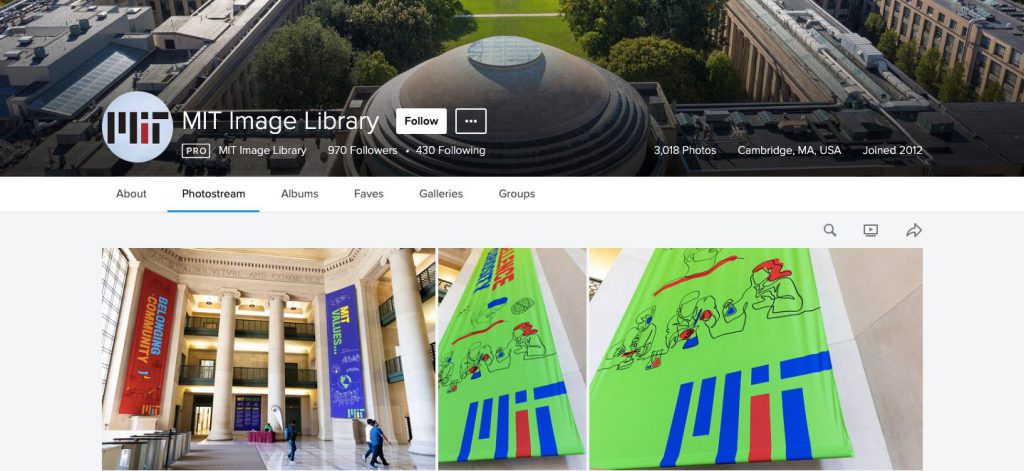Higher education social media marketers face unique challenges. Far from managing accounts for one or two brands and sub-brands, they might be responsible for managing social media profiles across dozens — or even hundreds — of different departments.
They must ensure that each department consistently creates and posts suitable types of content and find reliable, scalable strategies for centering important messaging on top-level brand accounts. You can’t do it all alone.
We gathered five leading higher ed social media marketers to discuss how to manage social accounts across an institution’s various departments. Our panel was hosted by Aliza Rosen, Assistant Director of Social Media at Johns Hopkins University, and included:
- Kayla Bosco, Social Media Strategist, Syracuse University
- Dani Dean, Associate Director of Social Media, The Ohio State University
- Jenny Li Fowler, Director of Social Media Strategy, Massachusetts Institute of Technology
- Nykiera Thomas, Social Media Coordinator, Oakland University
They discussed various issues related to collaboration, including how to ensure cohesive branding, maintain effective communication, break down silos, and share best practices with university social media managers. Read on for all the key takeaways:
Overcoming Common Higher Ed Collaboration Challenges
Silos can be a challenge in any industry — let alone one with as many decentralized departments and units as higher ed.
Breaking down those silos has been a key challenge for Dani Dean at The Ohio State University, which has over 2,000 institutional social media accounts, more than 200 undergrad majors, and 500+ specialized programs.
“It was a lot coming into the role and trying to figure out who’s the right contact,” Dani admits. “How can we collaborate the best when people have different strategies and different goals?”
One way Ohio State has overcome silos is by creating a social media community of practice group led by Dani’s team. Made up of over 200 marketers from across the institution — including specialist social media managers, marketers, and people for whom social media is just one aspect of their role — these bimonthly meetings are an opportunity to discuss current campaigns, different strategies, and new policies.
These meetings aren’t about the social media team instructing their colleagues on best practices. “I love it if our team isn’t even talking,” Dani says. “We like to have other people from departments share their success stories, different trends that they’ve tried, or different platforms that they’re finding success on — and how they’re doing that.”
Maintaining consistent standards is another common challenge for higher ed social media marketers with hundreds of different accounts to keep tabs on.
Kayla Bosco at Syracuse University needed to find a way to ensure all university-related accounts looked and “felt” the same, from the graphics they post to the handles they use.
Attending this Saturday’s football game? Bring a warm winter coat to donate to individuals and families in need in our local community.
? Learn more: https://t.co/Rbn4czPQJc pic.twitter.com/b0Q3e0DYiH
— Syracuse University (@SyracuseU) November 7, 2022
Her solution? To sit down as a team and put together a “giant document” covering all elements of social media governance. “It’s like a holy bible that everyone at the university will be able to point to. We’re going to launch it this semester, but it deals with account management, brand guidelines, best practices, tips, and tricks.”
Using Creative & Organizational Tools to Facilitate Collaboration
There’s no shortage of tools to support marketing collaboration, from project management platforms to file-sharing software. Choosing the right ones can significantly help manage social accounts across a higher ed institution’s various departments.
But how do you separate the platforms that will aid collaboration from those that create unnecessary noise?
Jenny Li Fowler at MIT has demoed “a ton of new tools,” from Airtable to Discord to Gilded. Her takeaway: “Just use what your team likes. If you find something that’s working and that everyone seems to like, why reinvent the wheel?”
For instance, MIT uses Flickr as an image library because it’s free and easy for everyone to use. “Our office will pay for a photographer to capture fresh photographs of our campus. We upload it to Flickr, and all our partners can download it freely.”
Similarly, she encourages her team to collaborate with text messaging when attending (and promoting) live events.
One tool that received near-unanimous acclaim from our panel is Sprout Social. Kayla at Syracuse University says her team “lives and breathes” the platform, so she encourages other schools and colleges to join to help with social media planning.
“They can see what we’re doing on our end when it comes to our editorial calendar, and then we can also see what they’re posting,” she explains. “It’s been really helpful to see what other units have planned, and they can see what we have planned. And the reporting and analytics are great. You can do specific reports and pull data for your deans and leadership.”
Kayla is a big proponent of Microsoft Teams. “We have a giant Teams group with our campus communicators, specifically those who run social media accounts for different schools and colleges. And we just bounce a lot of ideas around in that Teams group. We share best practices; we share articles to help people stay up to date on the latest trends.”
Building Trust With Other Teams & Stakeholders
With so many accounts and departments to support and monitor, relationship management is a crucial for any higher education social media marketer. What can you do to build trust — especially with colleagues who aren’t social media experts?
For Nykiera Thomas at Oakland University, most colleagues she works with daily have little or no social experience. She’s a believer in building trust through facetime. “I try to create that meeting to say, ‘You can bring me any issues. If you have any questions with what we’re doing, let me know so that we build that trust. You know me, and you have that direct contact with me.’”
Dani at The Ohio State University is equally happy to take a consultative approach to support colleagues. “As we know, the platforms constantly change, so for people that aren’t always in them or working with them, there can be a lot of questions that come up.”
She also uses her specialist knowledge to find the most beneficial ways to promote content through social media.
For instance, her data has shown that long-form written content tends not to play well on social, so it’s up to Dani and her team to find effective ways to amplify it. “How can we take little pieces of it to make maybe a quick video featuring students? We come in with an open mindset of: ‘Okay, we have one thing in this format, but how can we change it in different ways to still get that message across and still reach the goal?’”
Overseeing the Creation of New Social Media Accounts
But that doesn’t stop departments from creating more accounts. Do you just let them get on with it or put controls in place to slow the sprawl?
Our panel had a couple of different approaches to this challenge.
Ohio State has a process for all institutional social media applications whereby anyone wanting to create a new account has to complete a Qualtrics form that outlines the following:
- Their goals for the account
- What unit they’re in
- The unit lead (i.e., who will manage the account in question)
They also ask applicants to provide a handful of content examples too.
“The main purpose of it is just to set people up for success,” Dani explains. “Myself or one of the social managers on my team will review it, and then we’ll do a quick email or call to go over what their strategy is, their goals, the audience they’re trying to reach, just to make sure that’s really top of mind.”
Kayla at Syracuse University is another fan of this strategy. She’s currently in the process of creating a similar form that will ask questions about the account’s goals and how the “owner” plans to ensure a consistent flow of content.
On the other hand, Jenny at MIT takes a more hands-off approach. She doesn’t police new account creation but incentivizes account owners to follow best practices by amplifying those who get it right.
MIT has a social media hub that aggregates content from almost 200 accounts — but Jenny’s team only selects the best of the best for inclusion in the hub. “I think it incentivizes people,” she explains. “If you want to be included and amplified, then there are some standards we want you to meet.”
Nykiera at Oakland University falls somewhere between those two extremes. She doesn’t use a form or strictly police new account creation, but she also doesn’t just leave people to get on with it.
Instead, she runs through a presentation with new account managers to discuss best practices and encourage consistency with the main OU brand account. “We talk about best tips and tricks, and we break down each platform based on the audience that we have — who’s on our Facebook, who’s on our Twitter, our LinkedIn, Instagram, TikTok, and so forth.”
Nykiera also shares useful resources, such as a logo form, messaging guidelines, and a content calendar template, and adds them to the university’s social media directory. “But if it becomes inactive, we reach out and say: ‘Hey, just wanted to make sure we don’t have to take you off the page if it’s something that you guys are not going to keep up.’”
Sharing Best Practices In an Ever-Changing Social Landscape
Social media moves fast. Algorithmic changes and new feature launches mean best practices can quickly become obsolete. How can you ensure everyone — even people for whom social media is only a small part of their day-to-day — keeps abreast of the latest developments?
Kayla at Syracuse University recently started pulling together and sharing short slide decks on each social platform, covering things like Facebook best practices, how to boost a post, and Instagram changes.
Kayla’s team leans heavily on students to curate these platform-specific tips and tricks, particularly regarding newer platforms and features like TikTok, Instagram Reels, and BeReal. “They know those platforms best,” she explains.
View this post on Instagram
Dani at Ohio State has a similar process that involves sharing best practices, tips, and emerging trends with stakeholders.
Because her team only meets with departmental social media managers twice a month, she relies on weekly emails to share more time-sensitive updates. “It’s like the top five stories or updates around the industry that you should know,” she explains. “We send that out every Friday to that community, and people can forward it or share it any way they want.”
Featured image by Freepik.
Want more insights to help level up your higher ed social media marketing strategy? Check out our upcoming events!
Here are some similar articles you might enjoy:
- Leveraging Students to Support Higher Ed Social Media Initiatives
- How to Create & Manage an Effective Content Calendar in Higher Ed
- 10 Great Examples of TikTok Content for Higher Education



 Image source
Image source Image source
Image source Image source
Image source






